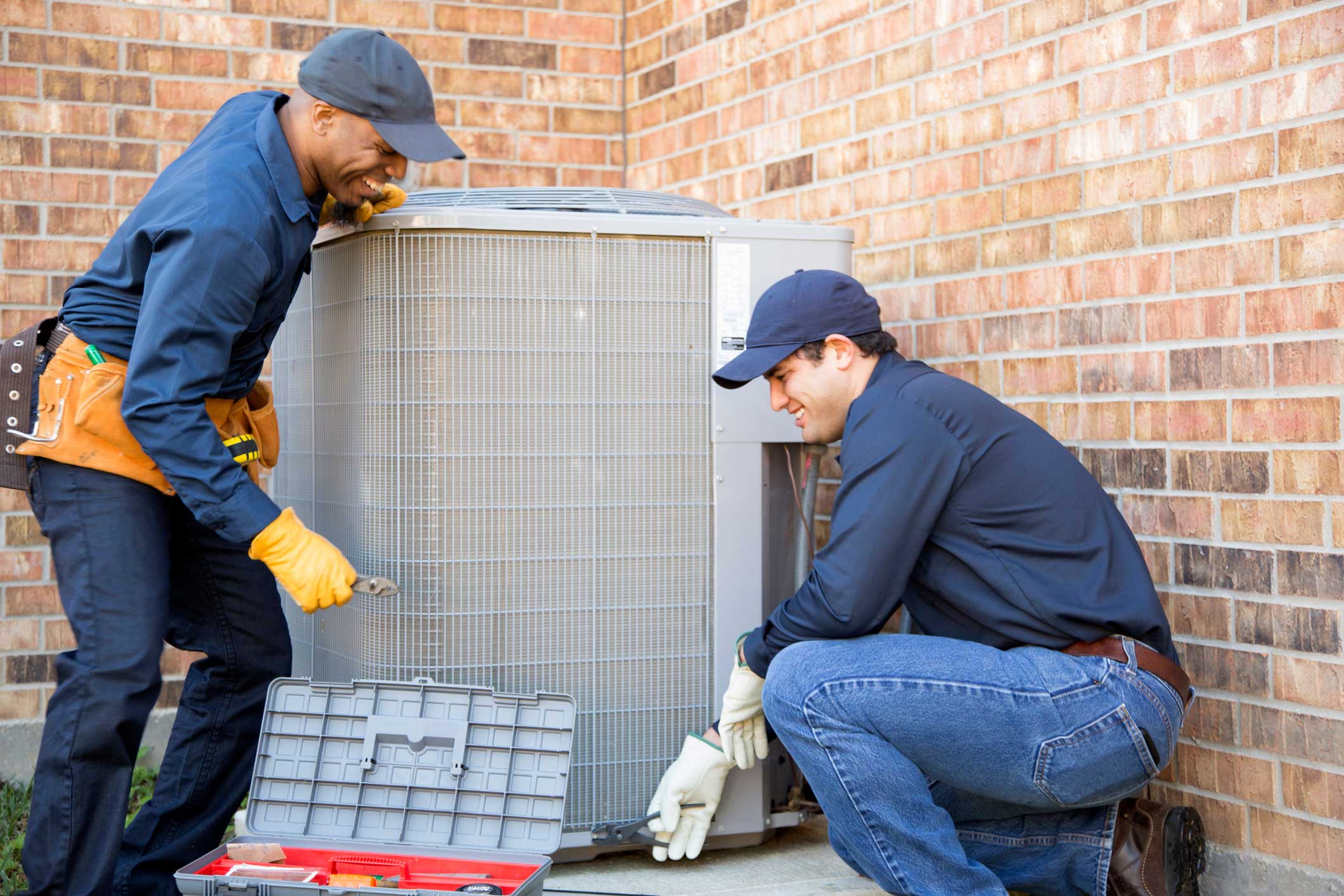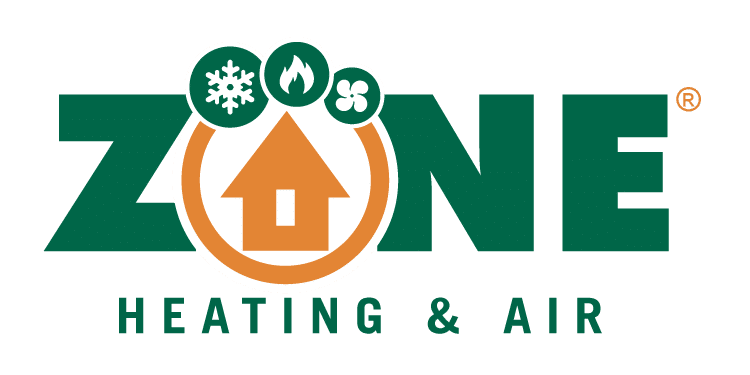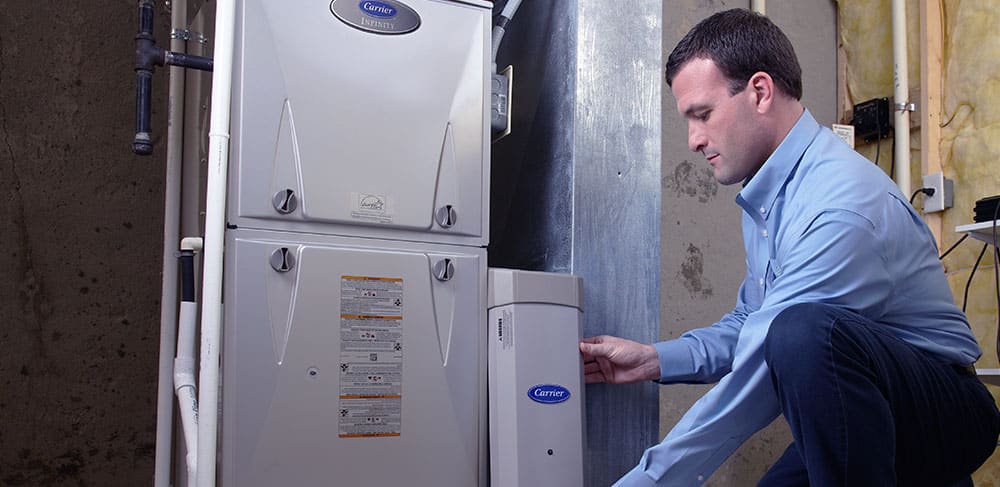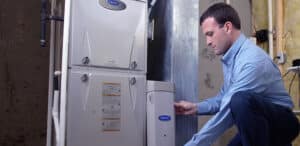The value of an in-home air purifier truly hits home when you consider the air inside your house might be less healthy than the air outside. We spend significant portions of our lives indoors, breathing air that is often loaded with pollutants, allergens, and other unseen irritants. By introducing the right air cleaner into your living space, you can cultivate a healthier atmosphere for everyone under your roof.
Air purifiers function as diligent guardians of your house air, filtering out contaminants around the clock. These devices target a spectrum of pollutants, from common dust and pervasive pet dander to irritating smoke and even microscopic germs, quietly performing air purification and contributing to fresher, clean air day after day.
This article examines the substantial advantages of incorporating a house air purifier into your home. We will look at their operational mechanics, the types of pollutants they effectively remove, and the reasons they are transitioning from niche gadgets to essential home appliances for health-conscious individuals focused on improving indoor air quality.
Table of Contents:
- Understanding Air Quality: Why It Matters
- How Air Purifiers Work
- The Benefits of an In-Home Air Purifier
- Choosing the Right Air Purifier
- Maintaining Your Air Purifier
- The Long-Term Value of an Air Purifier
- Conclusion
Understanding Air Quality: Why It Matters
Before fully appreciating the value of an in-home air purifier, it helps to understand indoor air quality. Surprisingly, the air within our homes can contain two to five times more pollutants than the air outdoors. This occurs because contaminants get trapped inside and accumulate, unable to be diluted by a volume of outside air.
Poor indoor air can contribute to various health concerns. Symptoms can range from mild issues like headaches, dizziness, and fatigue to more severe conditions affecting the respiratory system and heart health. Vulnerable groups, including children, the elderly, and individuals with pre-existing conditions like asthma, face heightened risks from compromised air quality.
Sources of indoor pollution are numerous and often overlooked. Everyday activities like cooking and cleaning release particles and chemicals. Even the structure of your home, including certain building materials and furnishings, or finishes (like paint and some window treatments), can release volatile organic compounds (VOCs), which over time, degrade your house’s air.
This is where air purifiers make a difference. By actively filtering and removing harmful airborne particles and gases, they directly contribute to improving indoor air. This process can lead to noticeable health improvements and create a more pleasant and comfortable home environment with good air.
How Air Purifiers Work
Air purifiers employ various technologies to achieve air cleaning. Understanding these methods helps in choosing a unit that best fits your needs. The most prevalent filter type technologies include:
- High-Efficiency Particulate Air (HEPA) filters: These are the gold standard for capturing physical particles. A true HEPA filter is certified to remove at least 99.97% of airborne particles measuring 0.3 microns in diameter, efficiently trapping dust, pollen, mold spores, and pet dander.
- Activated Carbon Filters: These filters excel at adsorbing (not to be confused with absorbing) gases, odors, and VOCs. The porous nature of activated carbon traps gas molecules responsible for smoke odors, cooking smells, pet odors, and chemical fumes.
- UV-C Light: Often referred to as UV light germicidal irradiation, this technology aims to neutralize airborne bacteria, viruses, and mold spores. Its effectiveness depends on sufficient exposure time and intensity, which can vary between models.
- Ionizers: These release negatively charged ions, which attach to airborne particles. This makes the particles heavier, causing them to fall out of the air or cling to surfaces or collection plates within the purifier. Some ionizers can produce ozone, so checking for certifications like CARB (California Air Resources Board) is important.
- Pre-filters: Often a washable primary filter, this layer captures larger particles like dust bunnies and pet hair before they reach the main filters. This extends the life of the more expensive HEPA filter and carbon filter.
Many high-quality air purifiers, including models from brands like Alen Air Purifiers, Medify Air, Coway AirMega, and the Alen Air BreatheSmart Flex, combine multiple technologies. For example, a unit might feature a pre-filter, a true HEPA filter, and an activated carbon filter for comprehensive air purification. The basic operation involves drawing room air into the unit, passing it through these air filters, and circulating the cleaner air back into the room.
It’s crucial to distinguish effective air cleaners from ozone generators. Ozone generators intentionally produce ozone gas, which is a lung irritant and can be harmful to health, despite sometimes being marketed for odor removal. Reputable health organizations advise against using ozone generators in occupied spaces.
Here’s a comparison of common filter technologies:
| Filter Type | Primary Function | Targets | Notes |
| HEPA (true hepa) | Particle Removal | Dust, Pollen, Mold Spores, Pet Dander, Bacteria | Highly effective for allergens & fine particles. Doesn’t remove odors/gases. |
| Activated Carbon (carbon filter) | Odor & Gas Adsorption | VOCs, Smoke Odors, Cooking Smells, Pet Odors, Chemicals | Amount of carbon matters for capacity & longevity. Doesn’t capture particles well. |
| UV-C Light (uv light) | Germicidal Irradiation | Bacteria, Viruses, Mold Spores | Requires sufficient exposure time/intensity. Effectiveness varies. Doesn’t remove particles or odors. |
| Ionizer | Particle Charging | Dust, Allergens | Particles may settle on surfaces. Potential for ozone production (check CARB cert). |
| Pre-Filter (primary filter) | Large Particle Capture | Large Dust, Pet Hair, Lint | Protects main filters, often washable. Extends lifespan of finer filters. |
The Benefits of an In-Home Air Purifier
Investing in an air purifier offers numerous advantages for health and comfort. These devices work diligently to create a better breathing environment. Let’s explore the specific benefits.
-
Reduces Allergens
For individuals battling allergy symptoms, a HEPA air purifier can provide significant relief. These devices are adept at trapping common airborne allergens such as pollen, dust mites, mold spores, and pet dander. Removing these irritants from house air can lessen reactions like sneezing, itching, congestion, and watery eyes.
Many allergy sufferers find that running an air cleaner equipped with a true HEPA filter, especially in the bedroom, dramatically improves their comfort levels. Reducing allergen exposure overnight can lead to waking up feeling more refreshed and less congested. Consistent use helps maintain lower allergen levels indoors.
Studies focusing on HEPA air filtration have shown measurable reductions in airborne allergen concentrations within homes. This filtration directly correlates with improved respiratory comfort for people susceptible to allergies and asthma. The ability to capture particles effectively makes these purifiers a valuable tool.
-
Eliminates Odors
Air purifiers featuring substantial activated carbon filters are highly effective at neutralizing unpleasant smells. They can combat persistent smoke odors from tobacco or wildfires, lingering cooking smells (like fish or curry), pet odors, and mustiness. An activated carbon filter works by trapping odor-causing gas molecules within its porous structure.
This odor-fighting capability helps maintain a fresher and more inviting atmosphere throughout your home. Instead of masking smells with air fresheners, which can add chemicals to the air, an air purifier removes the source of the odor. This leads to genuinely cleaner air that smells neutral and pleasant.
The effectiveness in odor removal depends on the amount and quality of the activated carbon used in the filter purifier. Models designed specifically for smoke or heavy odors often contain thicker, heavier carbon layers. This enhances their capacity to adsorb a larger volume of odor molecules.
-
Removes Harmful Particles
Beyond allergens and odor molecules, air purifiers are designed to remove a wide array of potentially harmful airborne particles. This includes fine dust that settles on surfaces, particulate matter from smoke (known as PM2.5), and even some types of bacteria and viruses, especially with a true HEPA filter. Reducing the concentration of these particles contributes positively to respiratory health.
Improving indoor air quality by removing these microscopic contaminants is particularly beneficial in urban areas or places prone to pollution events like wildfires. Even everyday indoor activities generate particles that can accumulate. A good air filter system constantly works to lower these levels.
The U.S. Environmental Protection Agency (EPA) acknowledges that air cleaners, particularly those with efficient HEPA filters, can help reduce levels of airborne contaminants. While not a replacement for ventilation, they add a significant layer of air cleaning within a defined space, contributing to a healthier indoor air environment.
-
Improves Sleep
Breathing clean air throughout the night can significantly enhance sleep quality. Air purifiers remove airborne irritants like allergens and dust that might otherwise cause nighttime congestion, coughing, or throat irritation, all of which disrupts rest. A reduction in these disturbances allows for deeper, more restorative sleep.
Furthermore, many air purifiers produce a consistent, low-level sound often described as “white noise.” This steady hum can mask sudden, disruptive noises from inside or outside the house, such as traffic or household sounds. Many people find this white noise soothing and conducive to falling asleep and staying asleep.
Research has indicated a link between better air quality and improved sleep patterns. Participants sleeping in environments with filtered air often report subjective improvements, such as falling asleep more quickly and experiencing fewer nighttime awakenings. Better sleep, in turn, contributes to improved mood, energy levels, and overall health.
-
Reduces Asthma Triggers
For individuals living with asthma, managing environmental triggers is crucial. Many common asthma triggers are airborne, including dust mites, pet dander, pollen, mold spores, and smoke particles. An air purifier equipped with a HEPA filter can effectively remove these triggers from the indoor air.
By reducing the concentration of these triggers in the home environment, particularly in bedrooms and main living areas, air purifiers can help lessen the frequency and severity of asthma symptoms. This may lead to fewer asthma attacks and a reduced need for rescue medication. Maintaining cleaner air provides a more stable breathing environment.
Major health organizations often include air filtration using HEPA filters as part of a comprehensive asthma management plan. Creating a quality room environment with reduced triggers is a proactive step towards better respiratory health for asthma sufferers. It complements medical treatment by addressing environmental factors.
-
Removes Harmful Chemicals
Our indoor environments often contain invisible chemical pollutants known as Volatile Organic Compounds (VOCs). These gases are emitted from various sources, including paints, varnishes, cleaning supplies, new furniture, carpets, aerosols, and even some building materials. Some VOCs can cause short-term irritation or have long-term health implications.
Air purifiers equipped with a substantial activated carbon filter are necessary for effectively reducing VOC levels. The activated carbon adsorbs these chemical gases, removing them from the air you breathe. This is a benefit that standard HEPA filters alone cannot provide, as they target particles, not gases.
Reducing exposure to VOCs contributes to a healthier indoor air environment, minimizing potential symptoms like headaches, nausea, or irritation of the eyes, nose, and throat. For chemically sensitive individuals, an air cleaner with a robust carbon filter can make a significant difference in their daily comfort and well-being.
-
Reduces Airborne Germs
While no air purifier can guarantee prevention of illness, some technologies can help reduce the concentration of airborne germs like bacteria and viruses. High-efficiency HEPA filters can capture microorganisms trapped within airborne droplets. Models incorporating germicidal UV light technology aim to neutralize captured or passing microbes.
It’s important to have realistic expectations; air purifiers are not medical devices and work best as part of a broader hygiene strategy (like handwashing and ventilation). However, by reducing the overall load of airborne contaminants, including some germs, they contribute to improving indoor air quality. The effectiveness of UV light depends heavily on design factors ensuring adequate exposure.
Using an air purifier can be an additional measure, especially during cold and flu season or in households with vulnerable individuals. They help by constantly cycling and filtering the room air, reducing the chance of inhaling airborne pathogens suspended in the air. Consider models from brands like Medify Air that often highlight germ-capturing capabilities.
Choosing the Right Air Purifier
Selecting the most suitable air purifier involves matching the device’s capabilities to your specific needs and environment. Considering several factors will help you make an informed decision and find a filter purifier that delivers results. Here’s what to look for:
- Room Size and Coverage (sq ft): Air purifiers are rated for specific room size capacities, usually listed in square feet (sq ft) or square footage. Choose a model rated for a room slightly larger than yours for optimal performance, especially for a large room or large rooms. Manufacturers often specify the Air Changes per Hour (ACH), indicating how many times the purifier can clean the entire volume of air in the room within one hour; aim for 4-5 ACH for allergy sufferers.
- Clean Air Delivery Rate (CADR): Developed by the Association of Home Appliance Manufacturers (AHAM), CADR ratings measure the volume of filtered air delivered by an air purifier. There are separate scores for dust, pollen, and smoke. Higher numbers indicate faster and more efficient air cleaning for that particle type – look for a CADR score that is roughly two-thirds of your room’s square footage.
- Filter Type (filters): The heart of any air purifier is its filtration system. A true HEPA filter is essential for allergens and fine particles. An activated carbon filter is needed for odors, gases, and VOCs. Many units, like those from Alen Air or Coway AirMega, combine both, often with a washable primary filter for larger debris like pet hair. Evaluate the specific filter type combination based on your main concerns (allergies vs. odors vs. general air quality).
- Noise Level: Air purifiers contain fans, which generate noise. Manufacturers usually provide decibel (dB) ratings for different fan speeds. Consider where you’ll use the purifier; lower noise levels are crucial for bedrooms or offices. Look for models with sleep modes that operate very quietly.
- Features and Ease of Use: Modern air purifiers offer various features like multiple fan speeds, timers, filter replacement indicators, air quality sensors with auto modes (adjusting speed based on detected pollution), and smart home connectivity. Decide which features add genuine value for you. Ease of filter replacement is also important.
- Running Costs and Energy Efficiency: Factor in the ongoing cost of replacement air filters. Check the recommended replacement frequency and price for both the HEPA filter and carbon filter. Look for Energy Star certified models, like some offered by Alen Air Purifiers or BreatheSmart Flex, to minimize electricity consumption, especially if you plan to run the unit continuously.
- Type: Decide between a portable air purifier for specific rooms or exploring options for a whole-house air purifier system integrated into your HVAC, providing whole-house air treatment. Portable air units offer flexibility, while whole-house systems offer convenience but are a larger investment. Most consumers opt for room air purifier models for targeted cleaning in spaces like bedrooms or living areas.
- Brand Reputation and Reviews: Consider brands known for quality and performance in the air purification space, such as Alen Air, Coway AirMega, Medify Air, or others frequently mentioned in Consumer Reports (which people often consult for independent testing). Customer reviews can offer insights into real-world performance and reliability.
Carefully weighing these factors against your budget and specific needs for improving indoor air will guide you to the best house air purifier choice. Don’t just select air purifiers based on price; focus on purifiers’ effective ratings and features relevant to your goals.
Maintaining Your Air Purifier
To maximize the value and effectiveness of your in-home air purifier, consistent maintenance is necessary. A neglected unit will not perform optimally and may stop cleaning the air efficiently. Proper care primarily involves managing the air filters.
Regular filter replacement is the most critical aspect of maintenance. Most manufacturers recommend replacing the HEPA filter every 6-12 months and the activated carbon filter every 3-6 months, depending on usage and air quality. Always follow the specific guidelines provided for your model, as schedules vary. Using old, clogged filters drastically reduces airflow and air cleaning efficiency.
If your air cleaner has a washable pre-filter or primary filter, clean it regularly (e.g., monthly or as needed). This involves rinsing it with water and letting it dry completely before reinstalling. Keeping the pre-filter clean helps prolong the life of the main HEPA and carbon filters by capturing larger particles like dust and pet hair.
Periodically wipe down the exterior of the air purifier and the air intake/outlet grills with a soft, dry, or slightly damp cloth. This prevents dust accumulation that could impede airflow. Always unplug the unit before cleaning.
For the best results in improving indoor air quality, run your air purifier consistently. Many models are designed for 24/7 operation, especially on lower, quieter settings. This practice provides continuous air filtration, preventing pollutant levels from building back up after the unit is turned off.
Proper maintenance ensures your investment continues to deliver cleaner air and function efficiently. It upholds the unit’s ability to capture particles and odors, providing the health and comfort benefits you expect. Neglecting maintenance essentially wastes the potential value of the filter purifier.
The Long-Term Value of an Air Purifier
While purchasing an air purifier involves an initial expense, the accumulated long-term benefits often represent significant value. The positive impacts on health, comfort, sleep, and overall well-being contribute to a worthwhile investment in improving indoor air quality. The goal is achieving consistently good air within your home.
Think about the potential reduction in healthcare-related costs. Fewer allergy symptoms, reduced asthma flare-ups, and potentially fewer respiratory illnesses can mean fewer doctor visits and less spending on medications. Enhanced sleep quality also translates to better productivity and overall health, which carries economic benefits.
Beyond measurable savings, there’s the considerable intangible value of enhanced comfort and peace of mind. Living in a home with fresher, clear air, free from unpleasant odors and irritating pollutants, simply feels better. This contributes significantly to making your home a true sanctuary.
As public awareness regarding the importance of indoor air quality continues to rise, having effective air purification systems could even become a selling point for homes. For potential buyers, especially those with respiratory issues or young children, a well-maintained air cleaner or even a whole-house air system signifies a healthier living environment. This focus on good air reflects a growing trend.
Conclusion
The value of an in-home air purifier is multi-faceted, extending well beyond the simple presence of cleaner air. It represents a proactive investment in the health, comfort, and daily quality of life for you and your family. By efficiently removing allergens, odors, smoke odors, pet dander, and other harmful airborne particles from your indoor air, a quality air cleaner fosters a healthier and more pleasant home environment.
While not a magic solution for all air quality concerns, an air purifier serves as a powerful ally in the effort towards improving indoor air. In an era where we spend the majority of our time inside, taking steps to manage the quality of the house air we breathe is increasingly vital. Whether you need a unit for a large room or a small bedroom, options exist.
If you have been considering whether an air purifier is right for you, reflect on the numerous benefits outlined. The ability to breathe clear air, reduce allergy symptoms, sleep better, and generally feel more comfortable in your own home offers profound, lasting value. Investing in good air is investing in well-being.
If you are interested in making your home cleaner and securing better health for yourself and your family, call Zone Heating & Air today. We know how to improve indoor air quality for homes throughout north Georgia and have been doing so for more than two decades. Our commitment to customer service and quality parts means that you can rely on us to make your indoor air the healthiest and cleanest it can possibly be. Call us today at 770-904-5432 to inquire about a free estimate for your home.
Stay Comfortable Year-Round. Schedule Your HVAC Installation Today!




